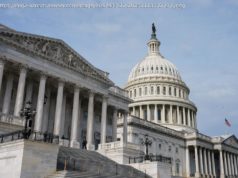Stanford professor and former U. S. ambassador to Russia Michael McFaul claimed that only 9 percent of oil imports come from Saudi Arabia. For all…
Stanford professor and former U. S. ambassador to Russia Michael McFaul claimed that only 9 percent of oil imports come from Saudi Arabia.
For all those who keep screaming at me on twitter about American dependence on Saudi oil imports, some facts: https://t.co/TjLSgQ3c7a . 9%. That’s it folks. Would be very easy to replace, including from our own production.
— Michael McFaul (@McFaul) October 15,2018
“For all those who keep screaming at me on twitter about American dependence on Saudi oil imports, some facts:… 9%. That’s it folks. Would be very easy to replace, including from our own production,” he said Oct. 15.
Verdict: True
The U. S. received 9.4 percent of its total petroleum imports from Saudi Arabia in 2017.
Fact Check:
McFaul’s tweet was in light of journalist Jamal Khashoggi’s death Oct. 2 after visiting the Saudi consulate in Istanbul.
“We constantly assume that we need the Saudis in our Middle East policy – I want to challenge that,” McFaul said on MSNBC Oct. 14. “Maybe we did back in the 1970s – I want to question the assumption today. We do not want to be associated with the regime that kills innocent people like Mr. Khashoggi.”
His tweet linked to data gathered by the Energy Information Administration (EIA) that shows the number of barrels of petroleum imported per day in 2017. Petroleum is largely crude oil, but also includes other petroleum products like gasoline, diesel fuel and ethanol. “The terms oil and petroleum are sometimes used interchangeably,” reads the EIA website .
In 2017, America imported 10.1 million barrels of petroleum a day from around the globe. Over 950,000 of those barrels came from Saudi Arabia. Imports from Saudi Arabia have been declining since 2003, when the U. S. imported 1.8 million barrels a day from the country. The decline has continued into 2018, with an average of 800,000 barrels imported per day from January to June, making up just 7.9 percent of total imports.
Saudi Arabia, a founding member of the Organization of the Petroleum Exporting Countries (OPEC), is one of the world’s largest exporters of crude oil. OPEC provided 70 percent of U. S. petroleum imports in 1977, but it only provided 33 percent in 2017.
Saudi Arabia is still second behind Canada in terms of total U. S. imports. In 2017, Canada exported 4.1 million barrels of petroleum a day to the U. S., accounting for 40 percent of America’s oil imports. Canadian imports have increased dramatically, having only made up 15 percent of imports in 1994. Mexico (7 percent), Venezuela (7 percent) and Iraq (6 percent) were also major suppliers to the U. S. in 2017.
One of the most common ways to measure a nation’s dependence on foreign oil is to compare total net imports (imports minus exports) to total product consumption. The U. S. relied on net imports for about 19 percent of its total petroleum consumption in 2017, the lowest percentage since 1967.
U. S. production of crude oil has increased greatly over the last decade, rising from 5 million barrels per day in 2008 to 9.4 million barrels per day in 2017. The EIA reports that 12 percent of the world’s crude oil production came from the U. S. in 2017.
Five states – Texas, North Dakota, Alaska, California and New Mexico – accounted for 65 percent of all U. S. crude oil production in 2017.
Follow Shane on Twitter
Have a fact check suggestion? Send ideas to [email protected] .






